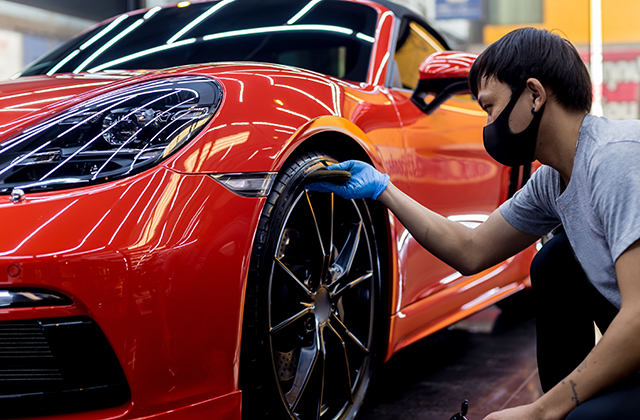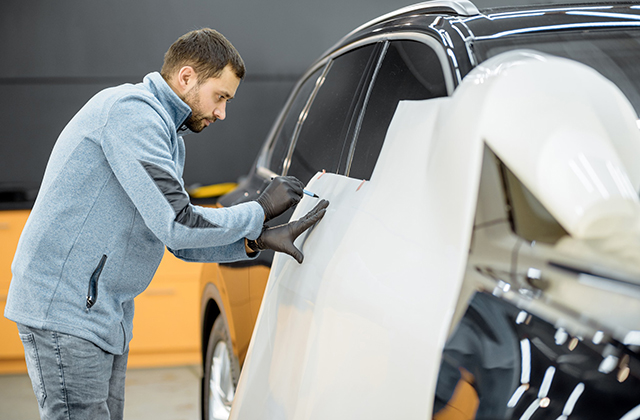Introduction
Car paint protection is an essential aspect of maintaining the appearance and value of your vehicle. Among the various challenges that can damage car paint, oxidation is one of the most common and persistent. In this comprehensive guide, we will explore the concept of oxidation, its impact on car paint, and the ultimate methods to prevent it through effective paint protection techniques.
Understanding Oxidation
Oxidation, in the context of car paint, refers to the chemical reaction that occurs when oxygen molecules interact with the paint’s molecular structure. This reaction leads to the deterioration of the paint’s surface, resulting in fading, discoloration, and loss of gloss. Factors such as exposure to sunlight, moisture, pollutants, and temperature fluctuations contribute to the oxidation process.
Types of Car Paint Protection
To safeguard your car’s paint from oxidation, various methods are available. The most commonly used options include waxing, ceramic coatings, and paint sealants. Each method offers distinct benefits and levels of protection.
Waxing as a Car Paint Protection Method
Waxing is a traditional yet effective approach to protect car paint. It forms a sacrificial layer over the paint surface, shielding it from environmental elements. Regular waxing enhances the shine, adds a hydrophobic effect, and provides a barrier against oxidation. To achieve optimal results, it is crucial to follow proper waxing techniques, including thorough cleaning, even application, and appropriate buffing.
Ceramic Coatings for Car Paint Protection
Ceramic coatings have gained popularity due to their long-lasting protection and durability because of they focus on car paint correction. These coatings create a semi-permanent bond with the paint surface, forming a protective layer that is resistant to oxidation, UV rays, and chemical contaminants. The application process involves meticulous preparation and multiple layers of the coating, ensuring a strong and effective shield for the paint.
Paint Sealants as a Protective Measure
Paint sealants are polymer-based products designed to provide a high level of protection for car paint. They offer a synthetic barrier that shields against oxidation, UV rays, and other environmental pollutants. Paint sealants typically last longer than wax and require fewer applications. Applying paint sealants correctly involves thorough surface preparation and following the manufacturer’s instructions for optimal results.
Tips for Preventing Oxidation
Preventing oxidation is key to maintaining the pristine appearance of your car’s paint. Here are some essential tips to help you minimize the risk of oxidation:
- Regular Washing and Drying: Wash your car regularly using a pH-balanced car wash solution and a soft sponge or microfiber cloth. After washing, ensure thorough drying to prevent water spots, which can accelerate oxidation.
- Avoiding Harsh Chemicals: When cleaning your car, steer clear of harsh chemicals such as bleach or ammonia-based cleaners. These can strip away the protective layers and damage the paint, making it more susceptible to oxidation.
- Parking in Shaded Areas: Whenever possible, park your car in shaded or covered areas to reduce prolonged exposure to sunlight. UV rays are a significant contributor to oxidation, and minimizing their impact can help preserve your paint’s integrity.
- Using Car Covers: If you don’t have access to shaded parking, consider using a car cover. A quality car cover provides an additional layer of protection against UV rays, moisture, and other environmental pollutants.
Maintenance and Care for Protected Car Paint
Proper maintenance is crucial for maximizing the longevity and effectiveness of your chosen car paint protection method. Here are some maintenance tips to keep your protected paint looking its best:
- Gentle Washing Techniques: When washing your car, use a gentle touch and avoid aggressive scrubbing. Opt for a microfiber wash mitt or a soft sponge to minimize the risk of scratching the paint’s surface.
- Regular Inspections: Routinely inspect your car’s paint for any signs of damage or wear. Promptly address any chips, scratches, or dings to prevent oxidation from spreading.
- Touch-Up Procedures: For minor paint imperfections, consider using touch-up paint to repair any exposed areas. Touch-up paint can help maintain the protective barrier and prevent oxidation in localized spots.
- Reapplication of Protection: Depending on the type of protection you choose, periodic reapplication may be necessary. Follow the manufacturer’s recommendations regarding reapplication intervals to ensure consistent and effective protection against oxidation.
Common Misconceptions about Car Paint Protection
To dispel some common misconceptions, let’s address a few myths related to car paint protection:
- Myth 1: Waxing is permanent protection. Reality: Waxing offers temporary protection and needs to be reapplied regularly for continued effectiveness.
- Myth 2: Ceramic coatings eliminate the need for maintenance. Reality: While ceramic coatings provide long-lasting protection, regular maintenance is still necessary to preserve their performance and appearance.
- Myth 3: Paint protection film is the only solution. Reality: Paint protection film is a highly effective option, but other methods like waxing and ceramic coatings also provide excellent protection against oxidation.
Conclusion
Protecting your car’s paint from oxidation is essential to maintain its visual appeal and resale value. By understanding the causes and effects of oxidation, choosing the appropriate paint protection method, and following proper maintenance practices, you can effectively prevent oxidation and enjoy a long-lasting, lustrous paint finish. Ceramiccoatingsydney.com.au provides value on your car after they improve the beauty of your car.


